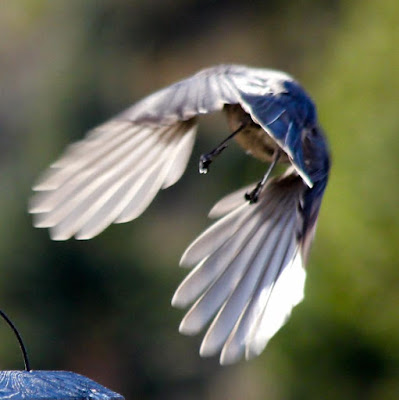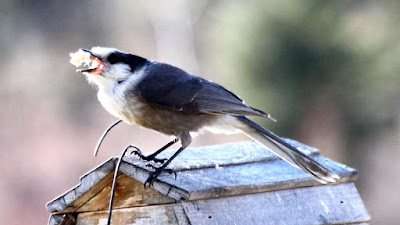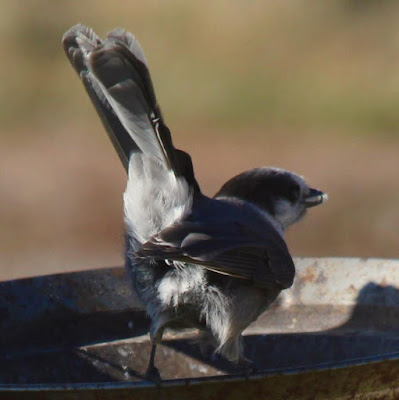They eat and stash a wide variety of food ... meat, eggs, insects, fruit, sunflower seeds, suet, (left over turkey chopped fine saturated with bacon fat ...) and etc. We have to wait till the bears hibernate before we put suet or bacon fat in our feeders or we will have unwelcome guests ...
Grey Jays are adaptive and intelligent, naturally curious and friendly. A bit of patience will get one feeding from your hand and coming back daily for more. They do have natural predators and so they are very alert, keeping one eye on the sky. Most hawks eventually migrate, so the winter skies are much safer.
Their vocabulary varies from chatter to whistles, and they can imitate other birds. They are territorial and monogamous, and yes they do find a new mate if an accident befalls their partner. They nest in April, which is a cold and barren time of year here, so they depend on this food stash to feed their fledglings.
All offspring from the current year except the dominant male are pushed out of the territory before winter, and the remaining young male joins Mom and Dad for a year till he matures, helping feed the young by retrieving caches. He eventually pairs with a female pushed out of another territory and the gene pool is protected.
The name "Whiskey Jack" is the oldest name we have for this widespread North American bird. It is a derivative of the Cree and Inuit ...Wee-sah-ka-shat (many spellings). Wee-sha-ka-shat, along with the beaver, otter and muskrat, is responsible for the order of things.
The Canada Jay or Grey Jay by modern definition....

well feathered everywhere, this bird is equipped to handle forty below ....

Sometimes called Camp Robber, the Canada Jay is omnivorous and an opportunist.

He is curious and interactive and will come to your voice.

His rounded tail and wings provide a silent and stealthy flight despite his steady wingbeats ...

He keeps one eye on the sky watching for hawks or the shrike.

He can carry a tremendous amount of booty away from the feeders, reminding me of a chipmunk as he stuffs his crop.

That tail acts as a flag to signal when the mouth is too full to talk.... lol.

The winter would be a lot quieter and less cheery without this little bird. They are such good company.
by David Finch


1 comment:
Lovely post, David, - such good companions to have around.
Post a Comment